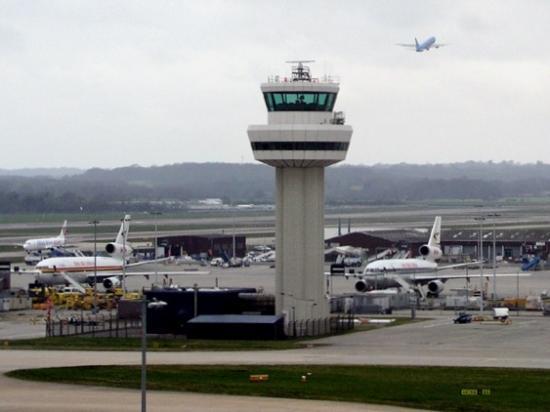UK Airports Are Already At Full Stretch And Passenger Numbers Are Set To Soar Causing More Delays
23rd August 2024

The summer holiday season is in full swing, with people flocking to their holiday destinations in record numbers.
Heathrow Airport has experienced a staggering 14.7% year-on-year growth in passenger numbers and a 17.5% increase in aircraft movements. For the first time in its history, London's principal airport exceeded 1.8 million passengers for three consecutive weeks in July. Stansted and Manchester airports, meanwhile, have also reported record passenger numbers for the same month.
These figures are remarkable in their own right, affirming the recovery of the travel sector following COVID, and demonstrating again the resilience of the aviation industry. But they are even more astonishing when considering the seemingly endless disruptions passengers have endured since airports reopened after the pandemic.
Just weeks ago, UK airspace was brought to a grinding halt when a simple software update from CrowdStrike and Microsoft caused a global IT outage. On the first day alone, 6,855 flights were cancelled around the world, including 6.7% of total UK scheduled departures, and thousands of flights were delayed. On-time performance across Europe was still only 52% two days later.
Join our readers who subscribe to free evidence-based news
This was a continuation of a string of disruptions at some of the UK's busiest airports. In June, a power failure at Manchester Airport grounded flights from terminals 1 and 2. An estimated 90,000 passenger were affected when 116 inbound and outbound flights were cancelled or redirected.
This problem followed the failure of the entire UK passport control e-gate system in May, causing chaotic scenes and untold delays for thousands of passengers. Last year, at the start of the late May bank holiday, a similar major failure had occurred. Then in August 2023, a complete shutdown of the UK Air Traffic Control system affected 700,000 passengers.
Throughout May and June in 2022, airlines issued mass flight cancellations because of staff shortages and operational challenges. Tui, the world's largest tourism group, cancelled 400 flights alone during the summer holiday season.
Passengers fearful of future disruptions to their travel arrangements are justified. In 2019, 75% of UK departures were within 15 minutes of their scheduled time. But by 2023, this figure had dropped to 64%, and the percentage of flights delayed by more than 24 hours was 1.8% in 2023, compared to 0.3% in 2016.
However, it's important to note that the air transport sector is a large, complicated, and multifaceted system. Many of these failures are outside the control of airport operators. Recovering quickly from them is further hindered by the lack of spare runway capacity at the busiest airports. Meaning that, even if airlines could get their aircraft to the right place, the lack of landing and take-off slots would prevent this.
When announcing the choice for a third runway at Heathrow in 2016, Chris Grayling MP, then transport secretary, cautioned that without additional runway capacity in the south-east, all London airports would reach maximum capacity by 2040. This announcement, following the findings of the Airports Commission, came 26 years after the 1990 government-commissioned study "Runway Capacity in the South East" came to the same conclusion.
Now, eight years on, the additional runway capacity needed seems even less likely to be built, with the third Heathrow runway not now expected to be completed until 2040.
The constraints on capacity at the UK's busiest airports can be illustrated by examining landing slots. These slots are the means by which the global aviation sector manages capacity at the busiest airports.
A landing or take-off slot grants an airline permission to use the airport runway and associated infrastructure at a specified date and time. All five London airports, plus Manchester, Birmingham and Bristol, are categorised as level 3, meaning their runway capacity cannot meet airline demand. An additional ten UK airports are categorised as level 2, meaning insufficient runway capacity during high-demand periods.
The pressure on airports is likely to increase
The challenge for UK airports and the bleak prospect for UK passengers, is that while airport capacity has remained static, demand continues to grow. By 2019, UK passenger numbers had grown to 300 million, up from 271 million in 2016 when the new Heathrow runway announcement was made.
The International Air Transport Association forecasts that global air passenger numbers will double from 4 billion in 2019 to 8 billion by 2040. During the same period, air-transported cargo will increase from 245 billion FTKs (freight tonne kilometres) to 525 billion.
According to the Airbus global market forecast, the demand for new aircraft will grow from 24,620 in 2023 to 48,230 in 2043. In other words, an additional 24,000 aircraft and 4 billion passengers will need somewhere to depart from and arrive. This will involve greater demands on already constrained airport capacity in the UK.
While there are strong economic and environmental arguments both for and against the expansion of runway capacity, the reality is that demand for air travel from our busiest and best-connected airports will continue to outstrip capacity.
This situation has negative consequences for passengers, including higher prices, less convenience, poorer passenger experiences, greater risk of travel disruption and becoming stranded, as well as longer recovery times for airports following disruptions.
Unsurprisingly, in a consumer survey conducted by Which? in August 2023, the smaller and regional airports ranked highest for passenger experience. They also ranked lowest among airports for average departure delays.
Author
Damian Devlin
Lecturer in Tourism and Air Transport Management, Department of Tourism, Hospitality & Events Management, Royal Docks School Of Business And Law, University of East London.
Note
This article is from The Conversation web site. To read it with links to more information go HERE
PHOTO
Gatwick Airport
Photographer Andy Potter via Wikipedia
Related Businesses
Related Articles
